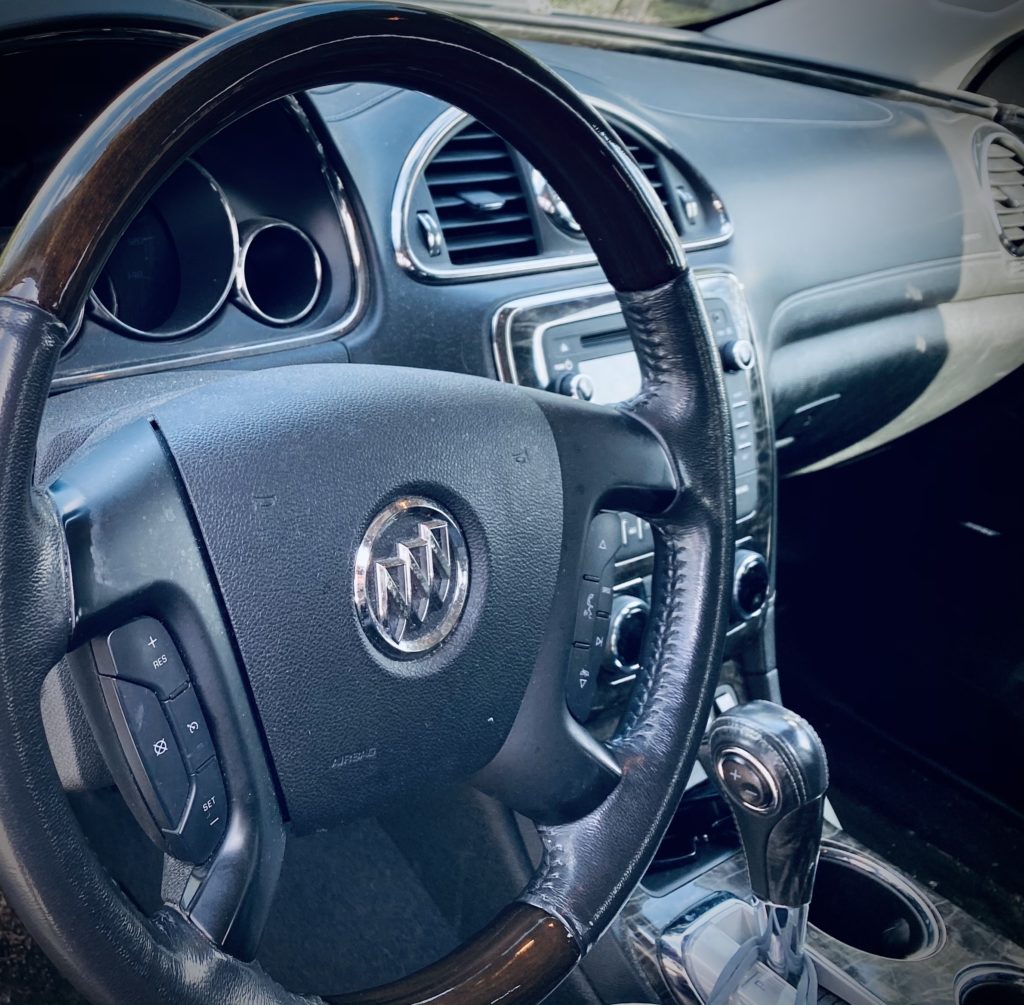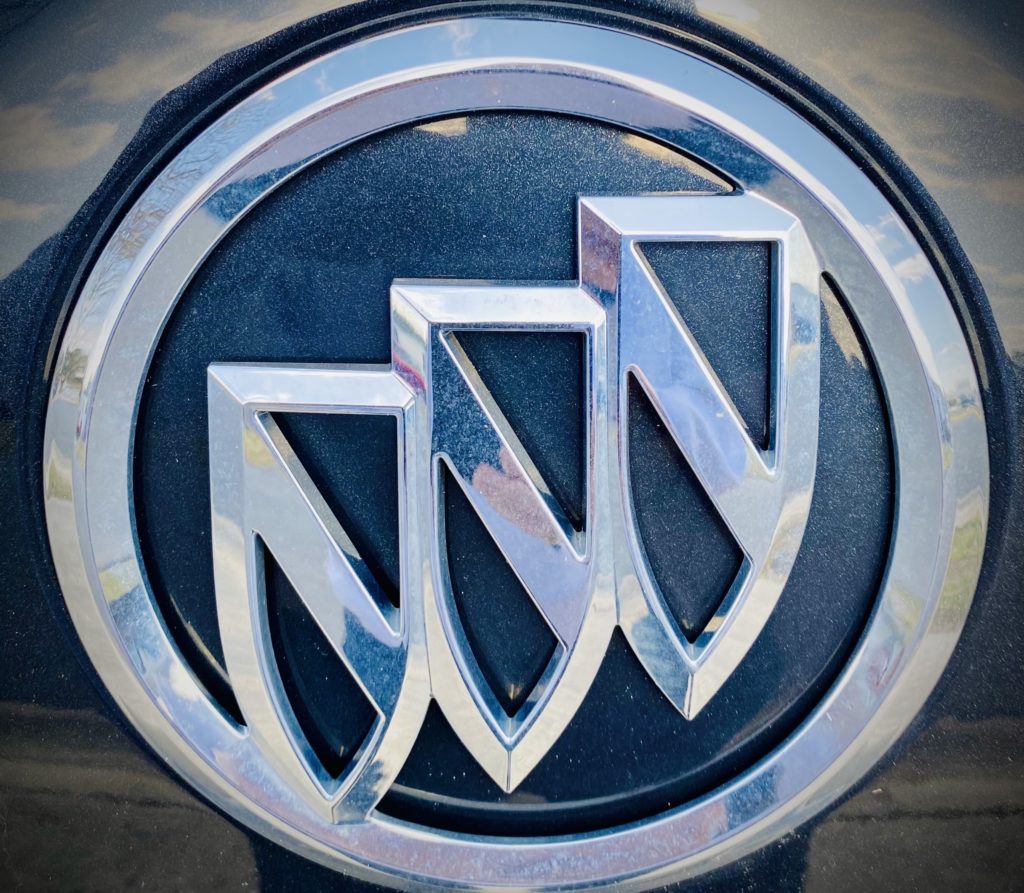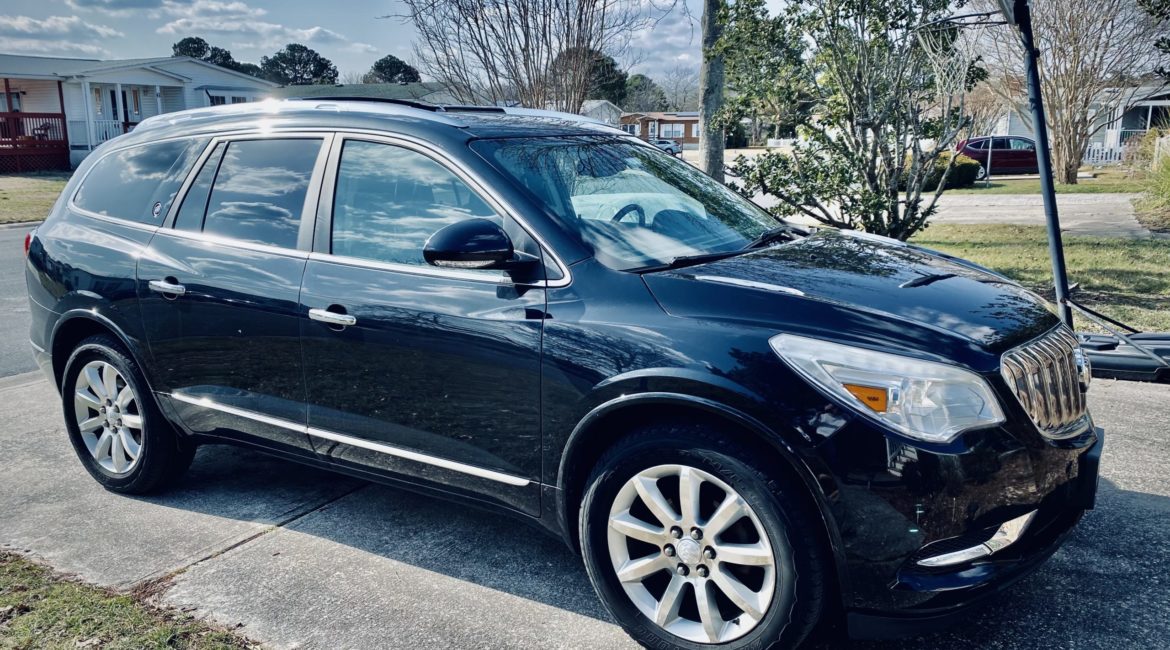GM wants to make sure that your Buick is repaired thoroughly.
If your Buick has been in a collision, there are very specific steps that an auto body shop needs to take in order to optimize your vehicle’s repairs. One of the smartest things that a shop can do is to review the manufacturer’s Position Statement regarding the type of repair needed. While every shop has access to this communication from each manufacturer, not every shop abides by the recommendations provided.
At our shop, however, we take this information very seriously, since we want to give you a safe and reliable repair.
In the case of your Buick, GM has issued a statement explaining why they strongly recommend pre- and post-repair scans in the event of a collision. If you are not familiar with these procedures and why they are important, keep reading for our explanation of the key points expressed in GM’s Position Statement.

Scans can provide shops with crucial diagnostic information.
Prior to conducting any repairs, we take the time to run a scan tool in order to uncover any damage to the vehicle’s internal systems. The scan tool will provide diagnostic trouble codes (DTCs) that tell us exactly which systems are having issues. When armed with this crucial information, we are better equipped to get to the source of any malfunctions.
Of course it makes sense that a shop would need to scan a vehicle to diagnose and repair damage after a collision, but it’s equally important for us to scan a vehicle AGAIN after we have made repairs. Why? Here’s what GM says about it:
“Even minor body damage or glass replacement may result in damage to one or more safety-related systems on the vehicle. Any action that results in loss of battery-supplied voltage and disconnection of electrical circuits requires that the vehicle is subsequently tested to ensure proper electrical function. Many safety and security-related components, sensors and Electronic Control Units (ECUs) require calibration and/or learns when replaced. These systems must be repaired according to the corresponding GM repair procedures in Service Information (GMSi).”
What GM means is that any collision repair can impact the electronic systems within a vehicle—even when those systems are not the specific items needing repairs.
As cars have become more sophisticated and technologically advanced, they are now equipped with more wires and sensors that can easily be disrupted when certain areas of the car are being addressed by an auto body technician. Repairing a dashboard or replacing glass could potentially lead to a disruption of the Advanced Driver Assistance Systems (ADAS), for instance. All parts of your Buick are designed to work together. When one part is impaired, this can affect a slew of functions within your car’s systems.
Another issue that can happen after a repair is that a system might need to be recalibrated. Cameras and sensors, for example, require very specific positions in order to function as needed. After a repair, it’s imperative to ensure that every part is calibrated to the precise measurement.
One of the best ways for us to ensure that a repair was done properly is to run a scan tool afterwards to ensure no diagnostic codes appear. This will let us know if all systems are functioning as they should.
The best way to scan for DTCs is with a factory scan tool.
Every car manufacturer has its own unique scan tool that can identify codes applicable to its own vehicles. General Motors is no different and recommends that shops use its scan tool (MDI or a J2534 device) and its own diagnostic software (GDS2 or Tech2/Tech2Win). Using any other scan tool or software can cause less accuracy in diagnoses.

The utmost safety and quality performance of your Buick are the reasons why our shop goes above and beyond with every repair.
If a shop makes the choice to skip the crucial steps of pre- and post-repair scans, they are risking the safety and overall performance of your Buick. It might be hard to believe, but some shops try to shave off repair time by avoiding these necessary procedures. At a minimum, this might lead to minor inconsistencies in your vehicle’s performance. At worst, however, this could lead to catastrophe. If your collision detection sensors aren’t calibrated properly or your cruise control is defective due to wiring issues, for instance, you could end up in an accident.
We don’t think it’s worth the risk to you or to your car to ignore the manufacturer’s recommendations. At our shop, we make pre- and post-repair scans a priority.
Syndicated content from https://capturethekeys.com/.

